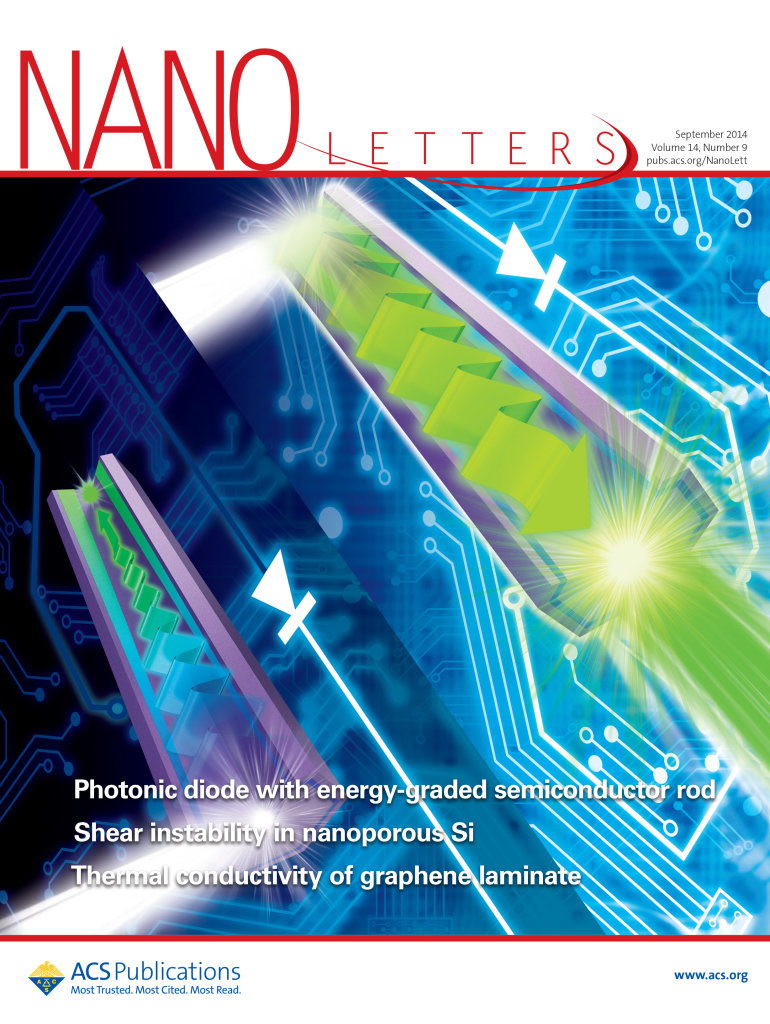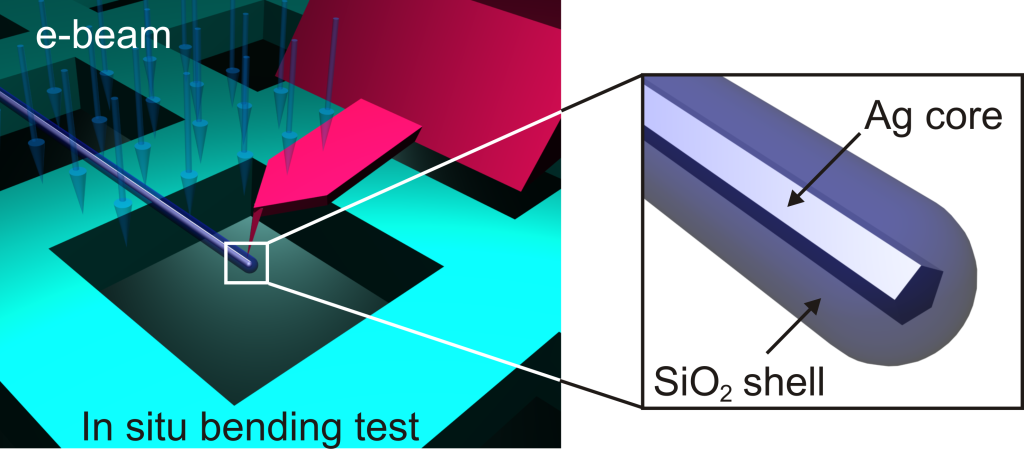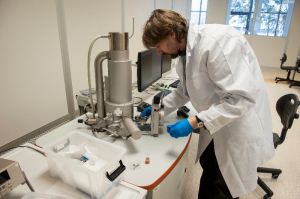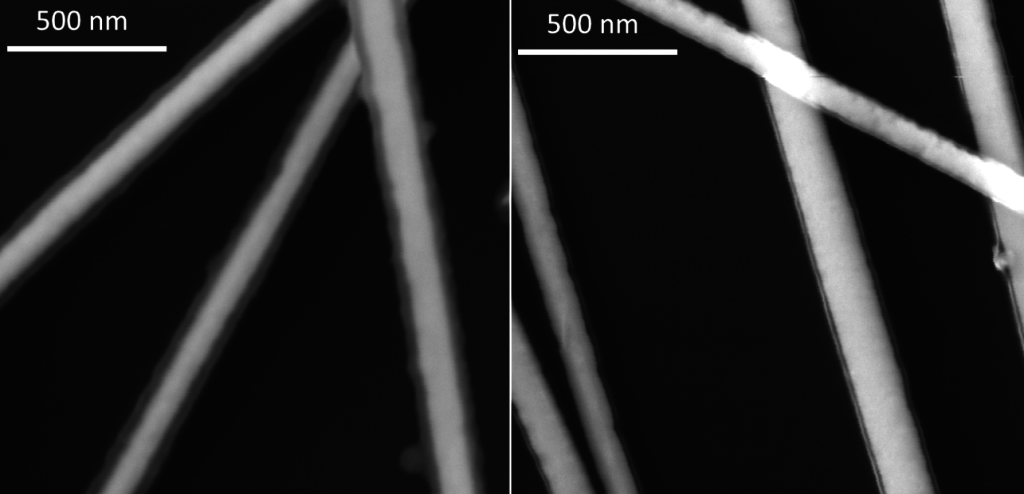
Vlassov, S., Polyakov, B., Dorogin, L., Vahtrus, M., Mets, M. Antsov, M., Saar, R., Romanov, A. E., Lõhmus, A., and Lõhmus, R. Shape restoration effect in Ag−SiO2 core−shell nanowires. Nano Letters 14, (9), 2014, p. 5201−5205.
Autori par pētījumu:
“Nanotechnologies have long become part of our day-to-day life. From mobile phones and computers to cosmetics and foods, we are surrounded by objects that benefit from or are based on ‘nano’ effects, and many more are round the corner. However, few people know the magic behind nanotechnology, which goes far beyond merely making things smaller. The “miracle” of nanotechnology, and the reason why it is of enormous scientific and technological interest, can be explained by the fact that the properties and behaviour of materials at the nanoscale can be very different from those at the micro- and macro-scale. The properties include melting point, electrical and thermal conductivity, mechanical strength and many other essential characteristics of materials. These differences are exploited in many unique applications of nanotechnology.
To get the most out of nanomaterials, it is essential to study individual nanostructures and measure their properties and behaviour. However, measuring on such a small scale is tricky and requires extremely fine and sensitive tools. Researchers at Institute Solid State Physics, University of Latvia in collaboration with colleagues from Institute of Physics, University of Tartu (IPUT) developed fine measurements technique for mechanical testing of nanostructures inside a scanning electron microscope. Experiments consist of controllable manipulation (dragging, pushing, bending etc) of nanostructure with simultaneous force registration. Number of different nanostructures were investigated and lot of useful data was extracted. However, most intriguing phenomena was discovered recently when they demonstrated, that combination of two different materials in a single core-shell heterostructure can lead to significantly enhanced and even completely novel properties. Nanomanipulation team studied mechanical properties of Ag/SiO2 core-shell nanowires, which are several hundred times thinner than human hair (figure 1), and found that such material can withstand severe deformations (can be bent into the loop) without fracture in contrast to uncoated silver nanowires. Moreover, they discovered, that plastically deformed Ag/SiO2 nanowires can restore their initial straight profile when irradiated with electron beam (figure 2, 3). The reasons behind such shape memory effect are completely different from those that are responsible for the shape restoration in well-known shape-memory alloys.

Figure 2: Schematics of experiment. Half-suspended nanowire is gradually bend by Atomic Force Microscope tip inside Scanning Electron Microscope [1]
Results of the study are published in Nano Letters – one of the most cited and reputable journal in the field of nanotechnology. [1]”
ACS Publications. Shape restoration effect in Ag−SiO2 core−shell nanowires.



